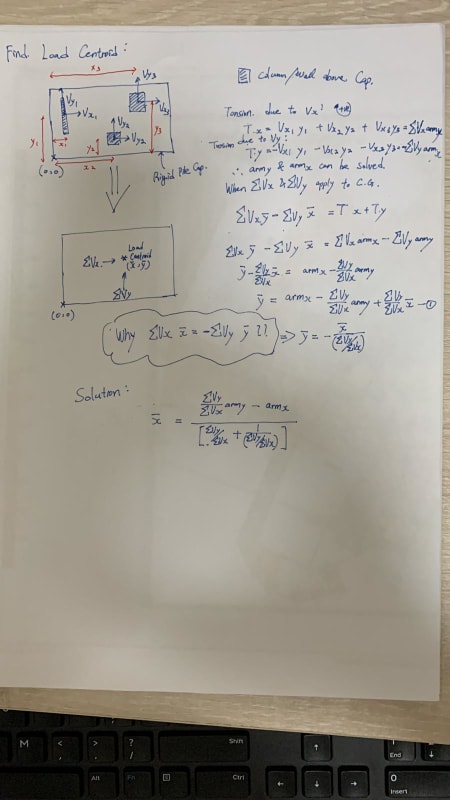For a rigid cap, the centroid location of the force doesn't really matter for the lateral shears. It will be distributed back among the lateral resisting elements (passive/friction/pile bending) based on their relative stiffness anyway.
If you consider a cut through your pile cap in plan, the lateral forces (plus vertical eccentricity) will create a moment resisted by your vertical force resisting elements (axial force in piles, or bearing pressures for an equivalent shallow combined footing). This can then be combined with the axial load to obtain the vertical force distribution through an elastic method calculation (similar to a steel bolted connection). Sometimes, finding the centroid location is used as a simplifying intermediate step for this calculation.
For normal assumptions (rigid pedestals and cap, elastic range and plane strains, where linear superposition applies) you can perform the calculation to determine the axial effects of lateral load using individual forces from each wall/column element, or first finding the summation and centroid of lateral force. I think this is what you are attempting above. However, the sum(Vx*x) is not necessarily equal to sum(Vy*y).
----
just call me Lo.


